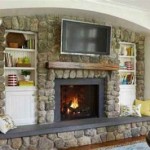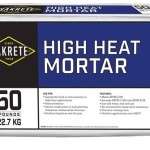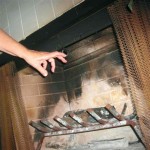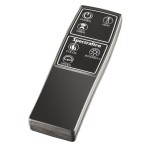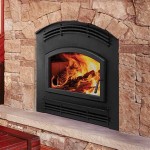Designing a Fireplace: A Comprehensive Guide
Fireplaces, traditionally a source of heat and light, have evolved into central design elements in modern homes. The design of a fireplace requires careful consideration of various factors, from functionality and aesthetics to safety regulations and energy efficiency. A well-designed fireplace can enhance the ambiance of a room, provide warmth during colder months, and increase the overall value of the property. This article will delve into the key aspects of designing a fireplace, offering a comprehensive guide for both homeowners and design professionals.
Understanding Fireplace Types and Fuel Options
The initial step in designing a fireplace involves selecting the appropriate type and fuel source. Fireplaces broadly fall into two categories: traditional masonry fireplaces and manufactured fireplaces. Masonry fireplaces are constructed on-site from materials like brick, stone, or concrete blocks. They offer a classic aesthetic and can be customized to fit specific design requirements. However, they tend to be less energy-efficient and more costly to install than manufactured options. Manufactured fireplaces, sometimes called prefabricated fireplaces, are factory-built units that are typically easier and less expensive to install. They are available in a variety of styles and fuel options.
Fuel options significantly impact the design considerations. Wood-burning fireplaces offer the appeal of a natural flame and crackling fire but require a chimney for venting and adherence to local regulations regarding wood burning. Gas fireplaces, fueled by natural gas or propane, provide convenience and ease of use. They can be operated with a remote control or thermostat and produce less ash and smoke than wood-burning fireplaces. Electric fireplaces are the simplest option, requiring only an electrical outlet for operation. They offer realistic flame effects without producing heat, making them suitable for locations where actual heat is not desired. Ethanol fireplaces burn liquid ethanol, offering a ventless option for spaces where installing a chimney is not feasible. However, safety considerations are paramount with ethanol fireplaces due to the open flame.
Each fuel type necessitates specific design considerations related to venting, fuel supply, and safety clearances. For example, a wood-burning fireplace requires a properly sized chimney to ensure adequate draft and prevent smoke from entering the room. Gas fireplaces need a gas line connection and a venting system that meets local codes. Electric fireplaces require a dedicated electrical circuit. Ethanol fireplaces, while ventless, require sufficient ventilation to prevent the buildup of harmful gases.
Integrating Aesthetic Elements and Architectural Style
Beyond functionality, the aesthetic design of a fireplace should complement the overall architectural style of the home. The fireplace often serves as a focal point in a room, drawing the eye and establishing a sense of visual balance. The materials used for the fireplace surround, mantel, and hearth play a crucial role in achieving the desired aesthetic.
For traditional homes, natural stone, brick, or wood are common choices for the fireplace surround. A detailed mantel can add a touch of elegance and sophistication. The hearth, the non-combustible area in front of the fireplace opening, can be constructed from similar materials or contrasting accents to create visual interest. For contemporary homes, sleek and minimalist designs are often preferred. Materials like concrete, metal, or glass can be used to create a modern and sophisticated look. A linear fireplace, characterized by its long and narrow shape, is a popular choice for contemporary spaces. The surround may be simple and understated, allowing the flame to take center stage.
The size and scale of the fireplace should be proportional to the room in which it is located. A large fireplace in a small room can overwhelm the space, while a small fireplace in a large room may appear insignificant. The height of the ceiling, the dimensions of the walls, and the placement of furniture should all be considered when determining the appropriate size and scale of the fireplace. Lighting is another important element to consider. Strategically placed spotlights or accent lights can highlight the fireplace surround and create a warm and inviting ambiance.
Adhering to Safety Standards and Building Codes
Fireplace design must prioritize safety to prevent fire hazards and ensure the well-being of occupants. Building codes and safety standards regulate various aspects of fireplace construction, including chimney height, clearance to combustibles, and hearth extensions. Adhering to these regulations is essential to obtain necessary permits and ensure the fireplace operates safely.
Clearance to combustibles refers to the minimum distance required between the fireplace and any flammable materials, such as wood framing, furniture, or curtains. Building codes specify these clearances to prevent the ignition of combustible materials due to radiant heat from the fireplace. Hearth extensions, the non-combustible area extending in front of the fireplace opening, are designed to protect the floor from sparks and embers. The size of the hearth extension is determined by the size of the fireplace opening. Chimneys must be properly sized and constructed to ensure adequate draft and prevent the buildup of creosote, a flammable substance that can lead to chimney fires. Regular chimney inspections and cleaning are essential to maintain the safety of a wood-burning fireplace.
For gas fireplaces, safety considerations include proper gas line installation, leak testing, and carbon monoxide detection. A qualified technician should always install and service gas fireplaces to ensure they operate safely and efficiently. Electric fireplaces, while generally safer than wood-burning or gas fireplaces, should be installed according to the manufacturer's instructions and connected to a properly grounded electrical outlet. Ethanol fireplaces require careful handling of the fuel and adherence to safety guidelines to prevent spills and fires. It is crucial to use only approved ethanol fuel and to avoid overfilling the fuel reservoir.
Optimizing Energy Efficiency and Ventilation
Energy efficiency is an increasingly important consideration in fireplace design. Traditional masonry fireplaces are notoriously inefficient, as a significant amount of heat escapes through the chimney. Modern fireplace designs incorporate various features to improve energy efficiency, such as insulated fireboxes, tight-fitting doors, and heat recovery systems.
Insulated fireboxes help to retain heat within the fireplace and reduce heat loss through the walls. Tight-fitting doors prevent drafts and reduce the amount of air drawn from the room into the fireplace. Heat recovery systems capture waste heat from the chimney and recirculate it back into the room. These systems can significantly improve the energy efficiency of a fireplace and reduce heating costs.
Proper ventilation is essential for both energy efficiency and indoor air quality. A well-ventilated room helps to distribute heat evenly and prevent the buildup of pollutants from combustion. Fireplaces should be equipped with outside air kits that draw combustion air from outside the home, rather than from the conditioned air inside. This helps to prevent drafts and improve the overall energy efficiency of the home. Consider installing a carbon monoxide detector near the fireplace to monitor the levels of this poisonous gas and provide an early warning in case of a malfunction.
Selecting Materials and Finishes
The selection of materials and finishes for the fireplace surround, mantel, and hearth is crucial to achieving the desired aesthetic and ensuring long-term durability. A wide range of materials are available, each with its unique characteristics and advantages. Natural stone, such as granite, marble, and limestone, offers a timeless and elegant look. Stone is durable, heat-resistant, and available in a variety of colors and textures. Brick is a classic choice for traditional fireplaces, offering a warm and rustic aesthetic. Brick is also durable and fire-resistant.
Wood is a popular choice for mantels and fireplace surrounds, adding warmth and character to a room. Hardwoods like oak, maple, and cherry are durable and can be stained or painted to match the existing decor. Concrete is a versatile material that can be used to create a modern and minimalist look. Concrete can be poured in place or precast into various shapes and sizes. Metal, such as steel, stainless steel, and copper, is often used for contemporary fireplace designs. Metal is durable, fire-resistant, and can be finished in a variety of colors and textures.
Glass is another popular choice for modern fireplaces, offering a sleek and sophisticated look. Glass can be used for fireplace doors, surrounds, and even entire fireplace facades. The finishes applied to these materials can further enhance their aesthetic appeal. Stains, paints, and sealants can be used to protect the materials from moisture and wear, while also adding color and texture. The choice of materials and finishes should be carefully considered to ensure they complement the overall design of the room and meet the homeowner's aesthetic preferences.
Considering Budget and Installation Requirements
Budget and installation requirements are important considerations in fireplace design. The cost of a fireplace can vary widely depending on the type, size, materials, and installation complexity. It is essential to establish a budget early in the design process and to obtain quotes from multiple contractors before making a final decision.
Installation requirements will depend on the type of fireplace and the existing construction of the home. A wood-burning fireplace requires a chimney, which can add significant cost to the project. Gas fireplaces require a gas line connection, which may involve trenching and plumbing work. Electric fireplaces require only an electrical outlet, making them the easiest and least expensive to install. Ethanol fireplaces, while ventless, may require additional ventilation to meet local codes.
It is advisable to hire a qualified contractor to install the fireplace to ensure it is done safely and according to building codes. A professional installer can also advise on the best type of fireplace for your needs and budget. Obtain all necessary permits before starting the installation process to avoid potential delays and fines. Carefully consider the long-term costs of owning a fireplace, including fuel costs, maintenance costs, and insurance costs. A well-designed and properly installed fireplace can add value and enjoyment to a home for many years to come.

5 Fireplace Design Ideas That Will Enhance Your Home

Fireplace Design Ideas Materials Colors Styles In 2024 Bodaq

Fireplaces Jane Lockhart Design

40 Fabulous Fireplace Design Ideas For Any Budget Or Style

Fireplace Design Ideas For Your Home Designcafe

Trends In Fireplace Design Ii Purcell Quality

50 Fireplace Ideas To Give Your Room That Special Spark

Red Hot Fireplace Ideas

10 Fireplace Designs That Will Give Your Home A Warm Inviting Glow Beautiful

Indoor Living And Fireplace Design Ideas Outdoor Advice Greatrooms
Related Posts



